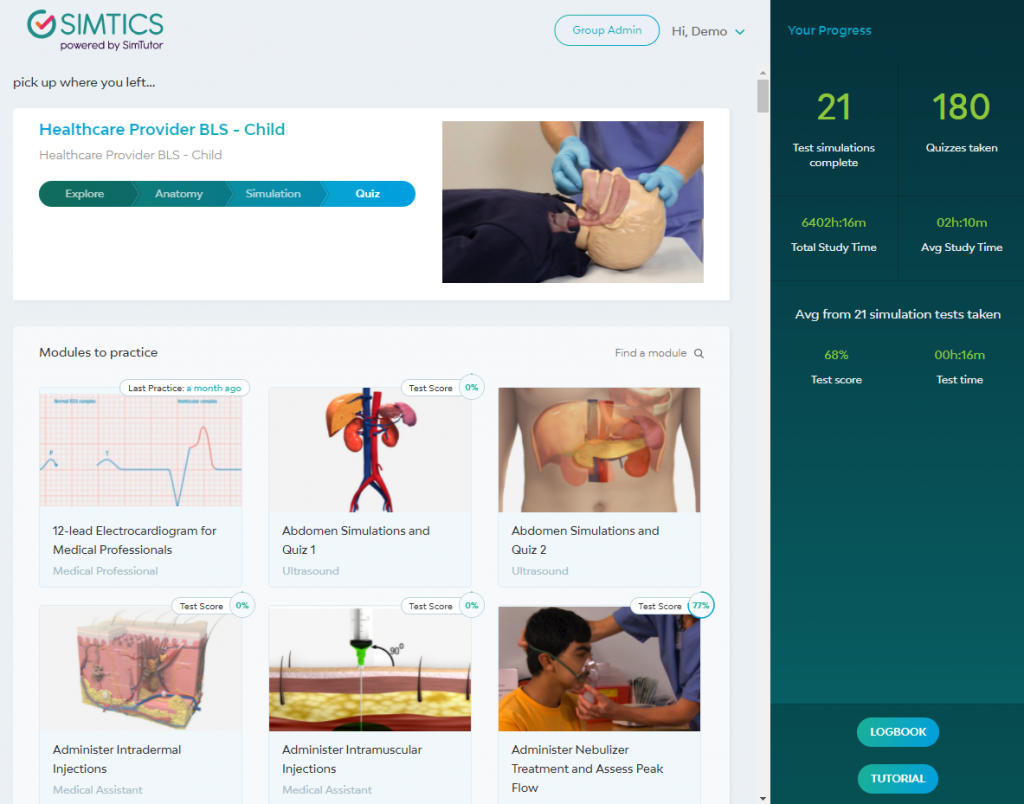 Saying that medical students have a lot to learn would be an understatement. From human anatomy to the workings of drugs and how to perform medical procedures, the list doesn’t end.
Saying that medical students have a lot to learn would be an understatement. From human anatomy to the workings of drugs and how to perform medical procedures, the list doesn’t end.
The challenge for learners is the need not only to learn the information, but to be able to recall it later; much later.
Back in the late 1800’s, Hermann Ebbinghaus found that without reviewing material that you’ve just learned, you will remember almost nothing by the 6th day. You simply forget it! Ebbinghaus called this gradual drop-off of recall the “forgetting curve”.
Fortunately, the research on learning and on the ways that our brains retain information is constantly improving. In this article, we discuss a well-researched technique that improves both short-term and long-term information retention: spaced repetition. Read on to find out what it is and how you can use it to learn better as a medical student – and how SIMTICS simulations can play a part in that.
What is spaced repetition?
Let’s start with an example. You have no doubt heard of flashcards. This is a simple system where you create a card (either a physical card or a virtual one in a flashcard app) for each thing that you want to learn, then you review the cards regularly. The cards are usually created in a question and answer format, with the question on one side of the card, and the answer on the other.
When reviewing your flashcards, this requires you to actively recall the answers, which is much more effective than reviewing your notes or the relevant section in your textbook.
The concept of flashcards has been around for years, so it’s popular and it does work to an extent – however it lacks in efficiency, especially over the long-term. But by adding spaced repetition to the mix, you can turn flashcards into something much more powerful.
The idea behind the spaced repetition technique is literally that you space out your repetitions of learning over time, while gradually extending the time between each information review. It’s the very opposite of cramming. So, for instance, instead of looking at your flashcards 3 times a day for a week, you would start by reviewing the information once. Then you would review it again the next day, then three days later, a week later, then two weeks later, a month later, etc. This is the gist of the technique.
So how does spaced repetition work? (and why)
The technique takes advantage of the way that your brain retains – and forgets – information. Remember the ‘forgetting curve’ we mentioned at the beginning of this article, the term coined by Hermann Ebbinghaus? Basically, he proved that your chances of forgetting a piece of information increase as more time passes since you last had access to that information.
The interesting thing about the forgetting curve is that it is affected by the number of times you recall a given piece of information. For example, if someone tells you a fact, you are likely to forget it within the next 3 days. But if someone tells you a fact, and you actively recall the information the next day, you are likely to be able to recall it for up to a week after that.
If you then recall the information 3 days later, and a week after that, you will be able to remember that information for even longer – probably for the next two weeks. What happens is that the more you recall something at intervals, the longer the information sticks in your brain.
So a spaced repetition system works by giving you access to information just as your brain is about to forget it. Over time, as the repetition is spaced out more and more, the information becomes solidly lodged in your long-term memory.
What are the benefits of spaced repetition for learning?
As discussed above, the main benefit of using spaced repetition is that it achieves more effective learning and better retention of information.
Secondly, spaced repetition is the best way to make sure that something makes its way into your long-term memory—meaning you will be able to recall it years later.
Finally, you may be able to learn and recall more, while making half of the effort. This is because the spaced recognition system doesn’t require you to review the same thing every day, but over increasingly long intervals of time. So you can be recalling other information in between repetitions of the first set, then interleave some more, and so on.
How does SIMTICS help with spaced repetition?
SIMTICS is a web-based system that allows you to apply the principles of spaced repetition to learning medical procedures and skills. SIMTICS teaches medical students not just facts about medical procedures or details of anatomy, but also provides simulations which allow you to learn and practice the actual procedures, and then test your knowledge of them through active recall.
Because SIMTICS is available on the web, learners can access the site any time, and space out repeated practice sessions at the desired intervals. The advantage is that even though you may learn a set of procedures during one particular section of your medical school program, and then move on to new topics, you can still log in to SIMTICS any time. This means you can continue practicing all the procedures in the simulations, as often as you want, at your preferred time intervals.
How to study in medical school?
In summary, what’s the answer to the question: how to study in medical school? While many medical students are tempted to cram right before an exam, that is actually one of the worst ways to learn because you’ll forget the information much more quickly. Using spaced repetition instead will make your study workload lighter, will be more efficient as a way to remember information, and more importantly will ensure that you can recall facts and procedures perfectly for the rest of your career—not just for the upcoming test!
Remember: your medical knowledge is a resource you can use throughout your career. Invest in it now with learning tools and spaced repetition techniques that target your long-term memory, and you will perform better in the medical field for the rest of your life!





